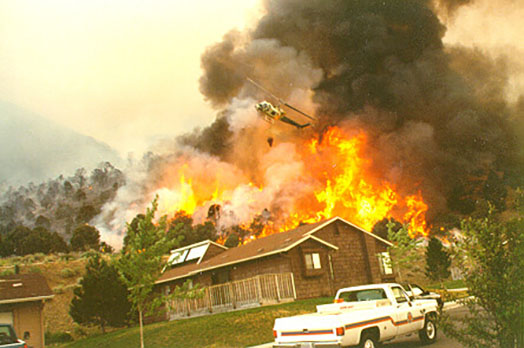Surviving Wildfires: Information from Extension.org
go.ncsu.edu/readext?1064192
en Español / em Português
El inglés es el idioma de control de esta página. En la medida en que haya algún conflicto entre la traducción al inglés y la traducción, el inglés prevalece.
Al hacer clic en el enlace de traducción se activa un servicio de traducción gratuito para convertir la página al español. Al igual que con cualquier traducción por Internet, la conversión no es sensible al contexto y puede que no traduzca el texto en su significado original. NC State Extension no garantiza la exactitud del texto traducido. Por favor, tenga en cuenta que algunas aplicaciones y/o servicios pueden no funcionar como se espera cuando se traducen.
Português
Inglês é o idioma de controle desta página. Na medida que haja algum conflito entre o texto original em Inglês e a tradução, o Inglês prevalece.
Ao clicar no link de tradução, um serviço gratuito de tradução será ativado para converter a página para o Português. Como em qualquer tradução pela internet, a conversão não é sensivel ao contexto e pode não ocorrer a tradução para o significado orginal. O serviço de Extensão da Carolina do Norte (NC State Extension) não garante a exatidão do texto traduzido. Por favor, observe que algumas funções ou serviços podem não funcionar como esperado após a tradução.
English
English is the controlling language of this page. To the extent there is any conflict between the English text and the translation, English controls.
Clicking on the translation link activates a free translation service to convert the page to Spanish. As with any Internet translation, the conversion is not context-sensitive and may not translate the text to its original meaning. NC State Extension does not guarantee the accuracy of the translated text. Please note that some applications and/or services may not function as expected when translated.
Collapse ▲
Photo source: Ben Hammack. Image features a fire-fighting helicopter over a house, with a Nevada Division of Forestry (NDF) pickup truck in front of house.
Wildfire Information Network Community of Practice offers excellent resources for the homeowner, whether in wildfire prone areas or for those who might find themselves in a threatening wildfire situation because of dry windy weather conditions. Continue reading and be sure to check out the Surviving Wildfire website to learn more. Some links are provided below.
For most people living in wildfire prone areas of the United States, it is only a question of when, and not if, a wildfire will threaten your home. The eXtension Wildfire Information Network, eWIN, Community of Practice (CoP) provides a means to develop and deliver the most current science- and experience-based information on wildfire issues to homeowners, other extension educators, and groups that incorporate wildfire as part of their education and outreach programs.
Our goal is to teach the homeowner how to live more safely in wildfire prone areas and provide current information to extension educators for use in their outreach programs. Specific goals include assembling, summarizing, developing and delivering educational materials related to:
- Pre-fire actions that reduce the wildfire threat to homes and other property.
- Homeowner actions when the wildfire threat is imminent, including information on evacuation and staying to defend your home.
- Post-fire actions pertinent to homeowners and their property.
- Social science aspects of implementing plans to reduce the wildfire threat to your home.
This information has been developed by cooperative extension educators and reviewed by cooperative extension educators, land-grant university faculty, government researchers and other technical and fire-fighting professionals in relevant discipline areas, including vegetation management, the fire resistance of building materials, extension education and social sciences.
For additional information about the eWIN Community of Practice please contact
Jan Gonzales, University of California Cooperative Extension jggonzales@ucdavis.edu.




